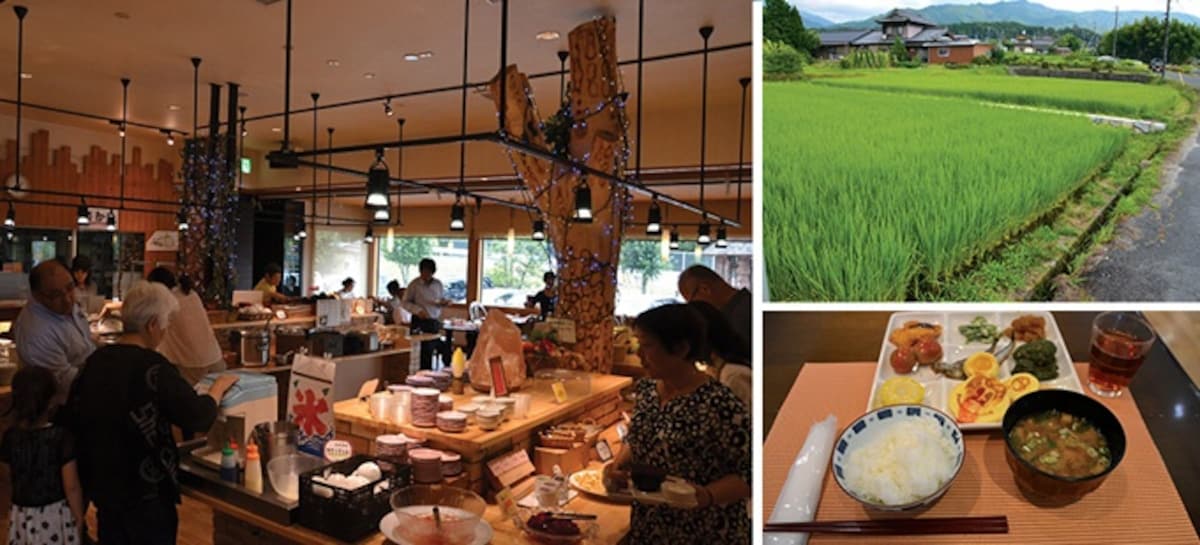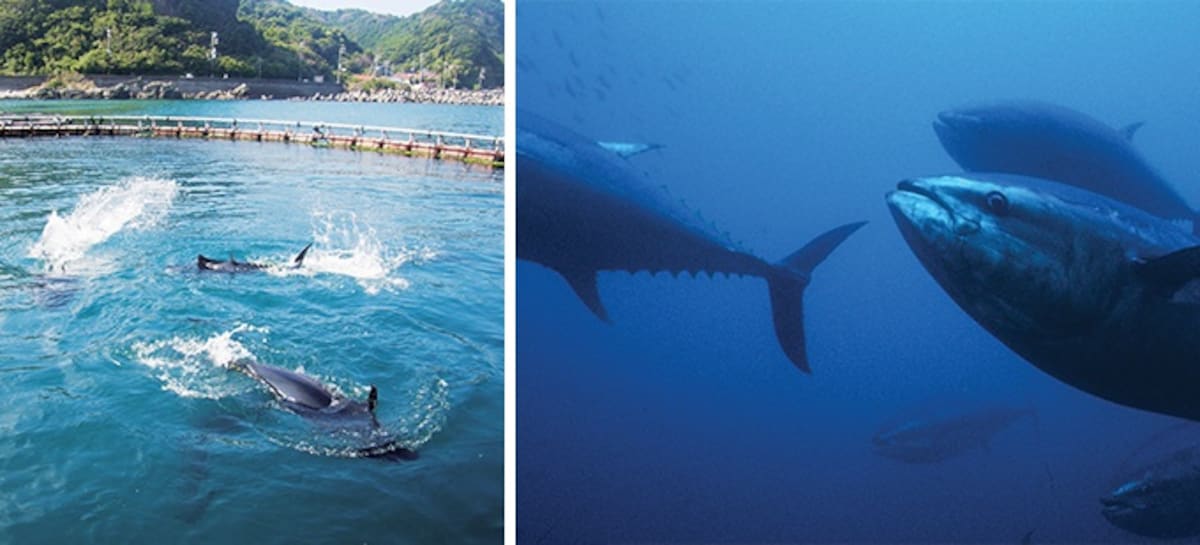6 Great Innovations from Japan's Countryside
From urban planning and fish farming to food recycling and the re-invigoration of traditional techniques, a number of great ideas have come out of Japan's smaller towns and cities. The following six examples are emblematic of the drive for innovation and self-sufficiency that is characteristic of the Japanese countryside.
By Highlighting Japan4. Compacting Urban Sprawl for Walkability (Toyama)
Like other regional cities around the country, Toyama City faced the problem of growing ranks of elderly in the midst of a declining overall population. Toyama was the archetype of a spread-out, car-dependent society with a faltering public transportation system, with 72 percent of respondents in a 1999 transportation survey indicating that they generally traveled by car. Yet, according to a 2006 survey, 30 percent of Toyama’s residents—and 70 percent of those in their sixties and above—did not have full access to a motor vehicle.
A sprawling city with low residential density incurs problems such as high waste collection costs, and consumes more fossil fuels and releases more carbon dioxide. Toyama concluded that a new strategy would be necessary to sort out these issues over the course of the next twenty to thirty years, and set out to become a walkable city built around public transportation, adopting a “compact city“ strategy.
Toyama’s administrators first set about reviving the JR Toyamako Line, which was on the verge of being shut down, by transforming it into the nation’s first light rail transit line, the Toyama Light Rail Toyamako Line. They adopted a low-floor, barrier-free streetcar system that operates at low speeds and low noise levels—a system in widespread use in European cities. They also increased the hours and frequency of operation, enhancing the transit service’s usability. The result: the number of users increased by about two times on weekdays and roughly 3.5 times on weekends. In particular, there was a marked increase in daytime use by the elderly, who had previously had limited ability to get out of their homes.
The compact city Toyama envisioned does not just focus on projects in the city center. While upgrading the public transportation system—which expands outward from the center and includes railways, streetcars and buses—they also intend to comprehensively develop the formerly independent municipalities that lie along the transit lines. By building houses and aiding home purchases in the city center and selected residential areas along the transit lines, the city is encouraging people to move into the planned areas and prevent any further urban sprawl.
5. Local Produce at a Restaurant Run by Farm Women (Gifu)
Nobuko Goto is the CEO of Natchan, the company that operates Babazu Dining (“Granny’s Diner”) in Nakatsugawa, Gifu Prefecture. Babazu Dining offers dishes made exclusively from locally grown fresh vegetables in season, presenting them in a buffet style.
The buffet’s menu changes depending on what has been picked that day. Since fresh seasonal vegetables are highly nutritious and the producers are known, diners are happy about what they’re eating. Vegetables typically rejected as unsuitable for the market because they aren’t picture-perfect are welcomed here. With women who know how to bring out the tastes of local produce doing the cooking, the restaurant’s many fans consist of health food lovers and people of all ages.
Goto, who turned sixty-two in 2014, made her living solely from farm work until 2000. She banded together with some twenty other farm housewives that year to launch Agrihouse Natchan, a direct-sales vegetable produce business, in a vacant storefront in a local shopping area. Agrihouse Natchan became a meeting place that connected farmers with consumers, and the local farmers loved it.
Around that time Goto met Tomohiro Nakada, the president of Saladcosmo, a company that makes agricultural products in Nakatsugawa. Nakada suggested setting up a restaurant run by women from the local farming community. Goto herself had once entertained the idea of operating a tearoom so she could interact with more people. Since she also had a chef’s license, she decided to give the restaurant a go. After talking it over with her direct-sales group, they decided to incorporate. Goto then traveled around Japan to observe how women ran restaurants.
In September 2006, she set up a company under the name Natchan, and Babazu Dining opened its doors three months later.
6. The World’s First Farm-Raised Bluefin Tuna (Wakayama)
Established in 1948, the headquarters of the Kinki University Fisheries Laboratory—also known as the Shirahama laboratory—is located in the township of Shirahama in Wakayama Prefecture on an inlet with a breathtaking view.
Research into farming bluefin tuna (called kuro maguro in Japanese) began in 1970 when Kinki and several other universities and public research facilities engaged in a three-year project initiated by Japan’s Fisheries Agency. The project met with difficulties, however, including the youngest fish dying or being eaten within months, and other research institutes were forced to withdraw due to budget and time restraints. Only Kinki’s Fisheries Laboratory, which was self-sustaining from the start, was able to continue its research.
Even so, the tuna did not spawn for a total of eleven years. Just as people began voicing their doubts about continuing the program, however, the water rose to the optimum spawning temperature in 1994, and the fish began reproducing at last. In 2002, the Shirahama laboratory became the first in the world to succeed in fully farming bluefin tuna—incubating and raising a fish to adulthood, taking eggs from that adult, and incubating them to begin the cycle anew—thirty-two years after the research began.
Survival rates from egg to full adulthood have gone from 0.0016 percent to 1 percent today. That number may seem small, but Shigeru Miyashita, director of the laboratory and a Kinki University professor, observes, “If these rates were seen in the wild, the oceans would be overrun with tuna.” These bluefin tuna have been dubbed “Kindai tuna“ after the university. Researchers are currently searching for a way to industrialize the cultivation process, most crucially raising good fish to stable adulthood.







